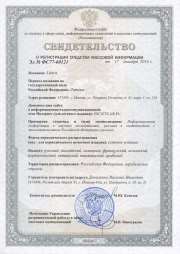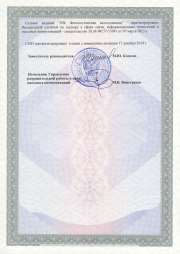|
DOI: 10.25136/2409-8698.2020.12.32071
Received:
29-01-2020
Published:
31-12-2020
Abstract:
This article examines the peculiarities of the legal English language as the object of translation studies. Currently, English language is dominant in international relations and business, and plays a significant role as legal language within the European Union. Legal English is a global phenomenon. This style of English language is used by the lawyers and other legal experts in their work. In the conditions of globalization of English language, it is necessary to be scrupulous about translation of the legal English in order to avoid inaccuracies in the entire system of international law. Therefore, the goal of this article consists in consideration of the unique characteristics of legal English associated with its origin, terminology, linguistic structure, linguistic peculiarities, and punctuation. The work employs descriptive method, comparative method, and method of applied comparative jurisprudence. The conclusion is made that legal English developed under the influence of languages previously used in the legal system, which is reflected in modern legal terminology and linguistic structure of the legal English language and requires attention in translation. Taking into account the aforementioned peculiarities would be of much help the legal translator in working with legal texts in English language.
Keywords:
legalese, legal translation, legal translator, Legal English, english legal terminology, English, legal terms, legal documents, legal texts, translation problems
This article written in Russian. You can find original text of the article here
.
В настоящее время лингвистические теории, исследующие юридический английский язык, приобретают все большее значение. В первую очередь в англоязычном дискурсе развивается криминалистическая лингвистика и юридический дискурс. Судебная лингвистика является областью прикладной лингвистики, это касается взаимосвязи между языком, законом и преступностью. Его целью является применение лингвистических знаний, методов и представлений в криминалистическом контексте закона, языка, расследования преступлений, судебных разбирательств и процедур [4, с. 28].
Однако нельзя забывать о международном значении английского юридического языка в современности. В настоящей статье в анализе правового дискурса основное внимание уделяется исследованию юридических текстов: письменных кодексов и текстуальных записей юридических судебных документов, а также международных правовых документов. Рассмотрим английский юридический язык в его развитии.
***************
Основы юридического английского языка тесно связаны с его историческими истоками. Так, в Великобритании правовая традиция основана на общем праве. На протяжении всей истории английский язык находился под влиянием латыни и французского языка. После нормандского вторжения в Англию в 1066 году и в течение почти 300 лет это были основные языки для судопроизводства. В результате многие слова употребляются в современном юридическом языке [5, с. 92].
Спустя несколько столетий после Нормандского нашествия английский язык по-прежнему оставался разговорным языком большей части британского населения, в то время как почти вся письменность существовала на французском языке или латыни. Англоязычные страны (особенно США, Великобритания, Канада, Австралия, Новая Зеландия и Южная Африка) унаследовали систему общего права, главная особенность которого заключается в том, что законы не кодифицируются и не переводятся на другие языки. Вследствие таких традиций составление многих важных юридических документов в настоящее время происходит с помощью использования архаичных языковых форм [7, с. 56].
Из нормандского в английский язык перешли такие слова, как, например: property (недвижимость), estate (имущество), chattel (движимое имущество), lease (аренда), executor (исполнитель), tenant (арендатор) [2].
Влияние нормандского языка может быть проиллюстрировано некоторыми из следующих примеров сложных лингвистических структур, используемых в юридическом письме.
С 1066 года латынь была языком для официальных записей и протоколов, но это не был язык юридических судебных дебатов. «Закон о признании вины», который был принят на французском языке в 1356 году, гласил, что все судебные разбирательства должны проходить на английском языке, но запротоколированы на латыни [5, с. 100]. Тем не менее, использование французского языка в судебных спорах продолжалось в XVII веке в некоторых областях права.
Влияние латинского языка сохранилось в ряде слов и фраз, таких как ad hoc (по особому случаю), de facto (фактически), bona fide (добросовестно), ultra vires (вне компетенции), которые по-прежнему используются в настоящее время в юридическом письме [12, с. 31].
Английский язык был принят как официальный для различных видов юридических документов в разные эпохи. Завещания начали писать на английском языке примерно в 1400 году. Уставы писались на латыни примерно до 1300 года, на французском языке до 1485 года, на английском и французском языках в течение несколько лет, и только на английском языке с 1489 года. Согласно «Закону о судах» 1730 года латынь была заменена английским языком [10, с. 47]. В результате появились новые отрасли права, например, такие как коммерческое право, и стали развиваться исключительно на английском языке.
В средневековый период юристы использовали смесь латыни, французского и английского языков. Использование слов из разных языков привело к появлению смешанных языковых дублетов в юридическом английском языке. Среди примеров смешанных языковых дублетов можно найти такие, как:
- «breaking and entering» (English/French) – «взлом и проникновение»,
- «fit and proper» (English/French) – «подходящий, соответствующий должности»,
- «lands and tenements» (English/French) – «земли и имущество»,
- «will and testament» (English/Latin) – «завещание».
Примерами английских дублетов являются:
- «let and hindrance» - «запрет на выезд» (для тех, кто находится под следствием)»
- «have and hold» - «право на владение» (вечное) [6, с. 158].
Эти выражения приобрели устойчивость в современном юридическом английском языке, соответственно требуют при переводе подбора точных эквивалентов.
Для письменных форм юридического английского языка используется термин legalese, который означает особую письменную форму английского языка. Основными характеристиками письменного юридического английского языка является его устойчивость и насыщенность клишированными структурами. Как уже было отмечено, в письменной форме используются слова латинского и французского происхождения, расширенная номинализация, пассивные глаголы и длинные предложения.
Рассмотрим эту форму языка подробнее. Главные особенности юридического английского языка заключаются в следующем:
1) предложения часто имеют явно своеобразные структуры, которые уходят корнями во французский письменный язык, что следует учитывать при переводе, например, «The provisions for termination hereinafter appearing or will at the cost of the borrower forthwith comply with the same» [1, с. 24].
2) пунктуация используется недостаточно. Особенно в документах международной торговой системы мы можем обратить внимание на явное отсутствие знаков препинания. Исторически сложилось широко распространенное среди юристов представление о том, что значение юридических документов содержится только в используемых словах и их контексте. В современном правовом оформлении пунктуация используется для уточнения их значения.
3) иностранные фразы иногда используются вместо английских фраз (например, inter alia вместо among others).
4) более старые слова, такие как herof, its, where (и другие производные, включая -at, -in, -after, -before, -with, -by, -above, -on, -upon) используются в юридическом английском языке, прежде всего, чтобы избежать повторения имен или фраз. Например:
• the parties here to (стороны настоящего соглашения) вместо the parties to this contract (стороны этого договора) [3, с. 101].
5) Использование таких модификаторов, как the same, the said, the aforementioned (тот же, упомянутый, вышеупомянутый) и т.д., в юридическом тексте интересно тем, что очень часто они используются в качестве прилагательных к определению существительного, не заменяя его. Например: the said John Smith - упомянутый Джон Смит [там же].
6) юридический английский язык содержит некоторые слова и названия, такие как:
• employer and employee (работодатель и работник);
• lessor and lessee (лизингодатель и лизингополучатель) и т.д. [9, с. 228].
В них взаимный и противоположный характер отношений обозначается использованием альтернативных окончаний: - er, - or, и -ee.
7) фразовые глаголы часто употребляются в исключительно юридическом контексте. Например:
• put down deposits - внести вклад,
• serve [documents] upon other parties - подать [документы] другим сторонам,
• write off debts - списать долги [8, с. 18].
Юридический язык иногда бывает трудно понять, из-за употребления большого количества сложных слов и фраз. Юридический английский язык использует сложную терминологию, которая незнакома неспециалисту (например, waiver (отказ), restraint oftrade (ограничение торговли), restrictive covenant (ограничительный пакт)). Большая часть этого словаря происходит от французского и латинского языков. Эти термины включают в себя обычные слова, используемые с особыми смыслами. Например, знакомый термин consideration (рассмотрение) относится, в юридическом английском языке к контрактам и означает «акт, снисхождение или обещание одной из сторон договора», «договор, который представляет собой цену» (Оксфордский юридический словарь).
***************
Рассмотрение особенностей английского юридического языка дает право утверждать, что сегодня, в эпоху, когда взаимодействие между (юридическими) субъектами стало правилом, перевод приобретает особую значимость.
Как было доказано, особенности юридических текстов, таким образом, покоятся в своей природе и прежде всего в дисциплине, в которой они рождаются. Право – это негибкая и непримиримая социальная наука, характеризующаяся точностью и однозначностью, устанавливающая, таким образом, границы внешние и границы внутренние для переводчика [11, с. 41]. Этот поиск точности и однозначности вступает в противоречие с самой природой языка, которая, как правило, содержит многозначность и неопределенность контекста. Как уже было отмечено, знание лингвистических особенностей английского языка и происхождения юридического его варианта позволяет выявить эти границы и создать адекватный его перевод.
Соответственно, с лингвистической точки зрения перевод юридических англоязычных текстов является законом, и может трактоваться как устойчивая система, которая требует знаний переводчика-юриста.
References
1. Agabekyan I. P. Prakticheskii angliiskii dlya yuristov. Seriya «Uchebniki i uchebnye posobiya». Rostov n/D: Feniks, 2003. - 410 s.
2. Mamulyan A. S., Kashkin S. Yu. Anglo-russkii polnyi yuridicheskii slovar'. M.: Rebbit, 1993. - 400 c.
3. Bkhatiya V. K. Analiz zhanrovo-yazykovogo upotrebleniya v professional'noi srede. N'yu-Iork: Routledge, 2013. - 264 s.
4. Dzhannoni D. S. Issledovanie yazyka i prava: osobennosti teksta i problemy perevoda. Bern: Peter Lang AG, International Academic Publishers, 2010. - 2013 s.
5. Kheig R. Yuridicheskii angliiskii yazyk. London: Cavendish Publishing Limited, 2004. - 343 s.
6. Butt P., Castle R. Modern legal drafting: a guide to using clearer language, 2nd ed. Cambridge: Cambridge University Press, 2006. 274 p.
7. Crystal D. Investigating English Style. Bloomington: Indiana University Press, 1969. 280 p.
8. Cutts M. Writing Plain English. Stockport: Plain English Campaign, 1980. 42 p.
9. Garner B.A. A Dictionary of Modern Legal Usage. Oxford: Oxford University Press, 2nd ed., 1995. 959 p.
10. Garner B.A. The Elements of Legal Style. Second Edition. Oxford: Oxford University Press, 2002. 273 p.
11. Hiltunen R. Chapters on Legal English: Aspects past and present of the language of the law. Suomalainen Tiedeakatemia, 1990. 122 p.
12. Rylance P. Legal writing and Drafting. London: Blackstone Press Limited, 1994. 189 p.
Link to this article
You can simply select and copy link from below text field.
|





